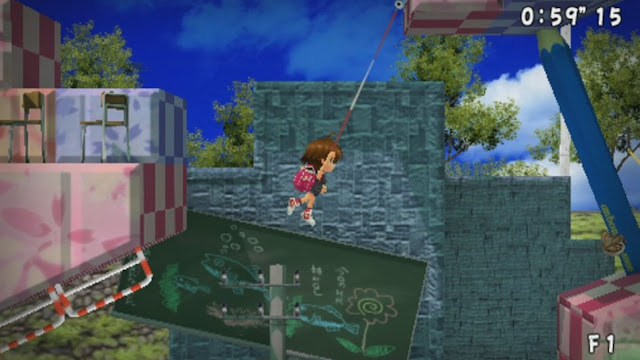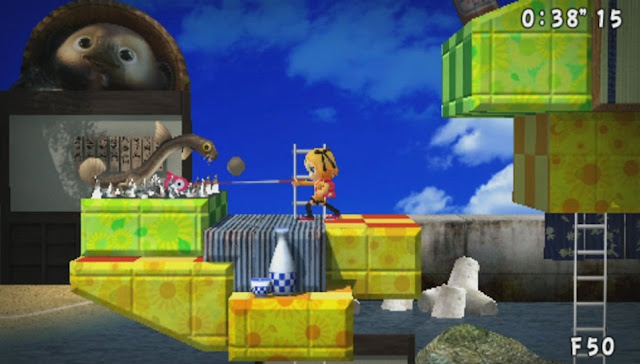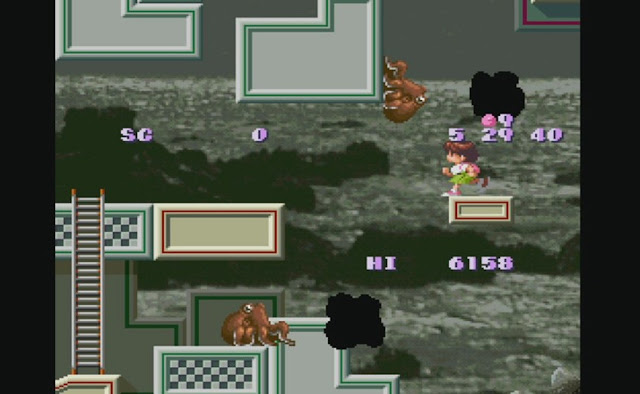In case it wasn’t clear with all these fishing references, the eponymous protagonist, Umihara Kawase, forgoes standard platforming equipment Mario’s jumping shoes and Mega Man’s buster in favour of a certain aquatic trinket called a fishing pole. And it’s hands-down the most satisfying implementation of a secondary (jumping being primary) function I’ve ever seen in a platformer. If you thought Simon Belmont’s whip in Super Castlevania IV was versatile, you’re in for a treat. Umihara’s rod is everything. It’s a reel, it’s a grapping hook, it’s a bungee cord, it’s a launcher, it’s a swing, it’s a way of life (or, more often, death).
Of course, pulling off all these manoeuvres is intimidating at the starting line. Umihara’s rod comes off as finicky and her movements are noticeably laxer than other platforming heroes. This is howthe game dips its toe into the puzzle platformer subgenre through its implementation of physics puzzles. Although some levels are based around player reflexes, the bulk are about problem solving by finding ingenious ways to manipulate the rod’s physics and locating the best position from which to swing. Umihara’s rod never gains new abilities throughout her quest so it’s never a question of whether there’s some piece of equipment to ease the task; everything can be explored the second you see it.
Granted, Umihara Kawase is hardly a 2D Dark Souls in terms of overall difficulty, but to bring up fishing again, it demands a level of patience that other puzzle platformers forgo. A thirty second to one minute long level may well devour half an hour as you struggle to parse its puzzles. The relatively small estate of each stage is often deceptive and the natural response to the layouts of many levels is to rush headlong into deadly scenarios. The reward for that, of course, is a sky-high death count that the game deviously delights in presenting every time you so much as highlight a level on the world map. I suspect this learning curve people is why some will fail to appreciate all of Umihara Kawase’s charms. One needs to properly grasp Umihara’s rod and the intricacies that are introduced on a level by level basis or this game becomes a soul-destroying pastime indeed.
Oddly enough, advanced modes for speedrunners do exist and, as such, I recommend turning down the volume before attempting them. Nevertheless, once you’ve mastered Umihara Kawase’s puzzling controls, secondary modes that reward precision like survival and time attack are ethereal in their appeal. The inclusion of a replay function allows players to capture not just their best times but the ridiculous flukes and triumphant comebacks that inevitably occur with such elaborate stage designs.
Sayonara Umihara Kawase catapults itself above various other experimental platformers by tapping into every last ounce of potential its “gimmick” has to offer, eventually transcending all derogatory connotations of that term. Of equal importance are the raw atmosphere exuded by each stage and the unparalleled sense of contentment inherent in besting them. It’s the complete package.
– Clark A.
Anime Editor
Email me at: clarka@digitallydownloaded.net












